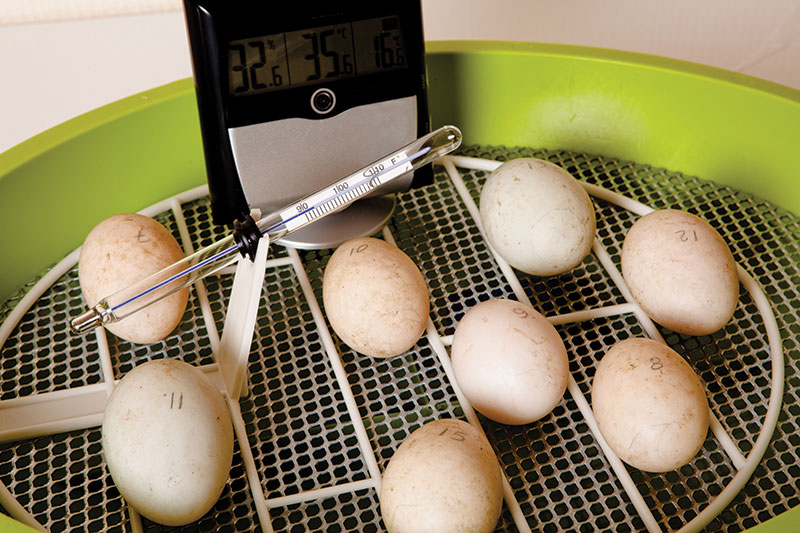For many chicken enthusiasts, the anticipation of hatching eggs in an incubator is a thrilling experience. However, it can also be fraught with challenges, especially when facing the issue of failed hatches. Understanding how to reduce failed hatches in incubator is crucial for maximizing your success rate and ensuring healthy chicks. This guide aims to provide you with comprehensive insights and practical tips to achieve just that.

Understanding the Basics of Incubation
Before diving into specific strategies, its important to have a firm grasp of the incubation process. This involves controlling temperature, humidity, and ventilation to create the ideal environment for egg development. Each of these factors plays a critical role in the success of your hatch.
The Role of Temperature
Temperature is arguably the most critical factor in using an incubator. The ideal temperature for most chicken eggs is around 99.5 degrees Fahrenheit. Fluctuations can lead to developmental issues, so its vital to monitor your incubator closely.
The Importance of Humidity
Humidity levels affect the moisture lost from the egg during incubation. Too much or too little humidity can cause the embryo to either drown or become dehydrated. Aim for a humidity level of about 40-50% for the first 18 days, increasing to 65-70% for the final days.
Common Causes of Failed Hatches
There are several reasons why hatches might fail. These can range from improper settings within the incubator to external factors such as the health of the breeding stock or the quality of the eggs themselves.
Poor Egg Quality
Not all eggs are suitable for hatching. Eggs must be clean, well-formed, and stored properly before incubation. For tips on selecting the best eggs, see our best practice for egg collection guide.
Incubation Errors
Even minor errors in temperature or humidity can dramatically affect hatch rates. Regularly calibrate your incubator and ensure all settings are consistent with recommended levels. Our egg incubator humidity hacks provide additional insights.
Handling and Turning Eggs
Eggs need to be turned several times a day to prevent the embryo from sticking to the shell. Automated incubators often handle this task, but if you are manually turning, ensure its done gently and regularly.
Enhancing Incubator Performance
To improve hatch rates, consider upgrading your incubator or making adjustments to your current setup.
Calibrating Your Equipment
Regular calibration of your incubators thermometer and hygrometer is essential. This ensures that the readings are accurate and adjustments can be made as needed.
Choosing the Right Incubator
Different incubators offer varying features. Research models that fit your needs and budget, considering factors like egg capacity, ease of cleaning, and the reliability of controls.
Monitoring and Adjusting During Incubation
Regular monitoring is vital. Keep a log of temperature and humidity readings to track the incubators performance.
Spotting Problems Early
By closely observing the eggs and incubator, you can identify potential issues early. Candling eggs at various stages can help you monitor development and identify any non-viable embryos.
Making Necessary Adjustments
If you notice any irregularities in your readings, act quickly to adjust settings. Consistency is key to a successful hatch.
Post-Hatch Care and Considerations
Once your chicks have hatched, their care continues outside the incubator. Proper brooder setup and nutrition are essential for their growth and health.
Setting Up the Brooder
Ensure your brooder is warm, clean, and safe for the chicks. Provide food and water sources that are easily accessible for their tiny stature.
Nutritional Needs of Chicks
Choose a high-quality chick starter feed to ensure they receive the necessary nutrients for healthy growth.
Conclusion
By understanding how to reduce failed hatches in an incubator, you can increase your success rates and enjoy the rewards of raising healthy chicks. Remember, its a process that requires attention to detail and a willingness to learn from each experience.

FAQs
What temperature should I maintain in my incubator?
Maintain a temperature of around 99.5 degrees Fahrenheit for optimal results.
How often should I turn the eggs?
Eggs should be turned at least three to five times a day to prevent the embryo from sticking to the shell.
What should I do if humidity levels fluctuate?
Adjust water levels in your incubator and ensure proper ventilation to stabilize humidity.
This article contains affiliate links. We may earn a commission at no extra cost to you.











